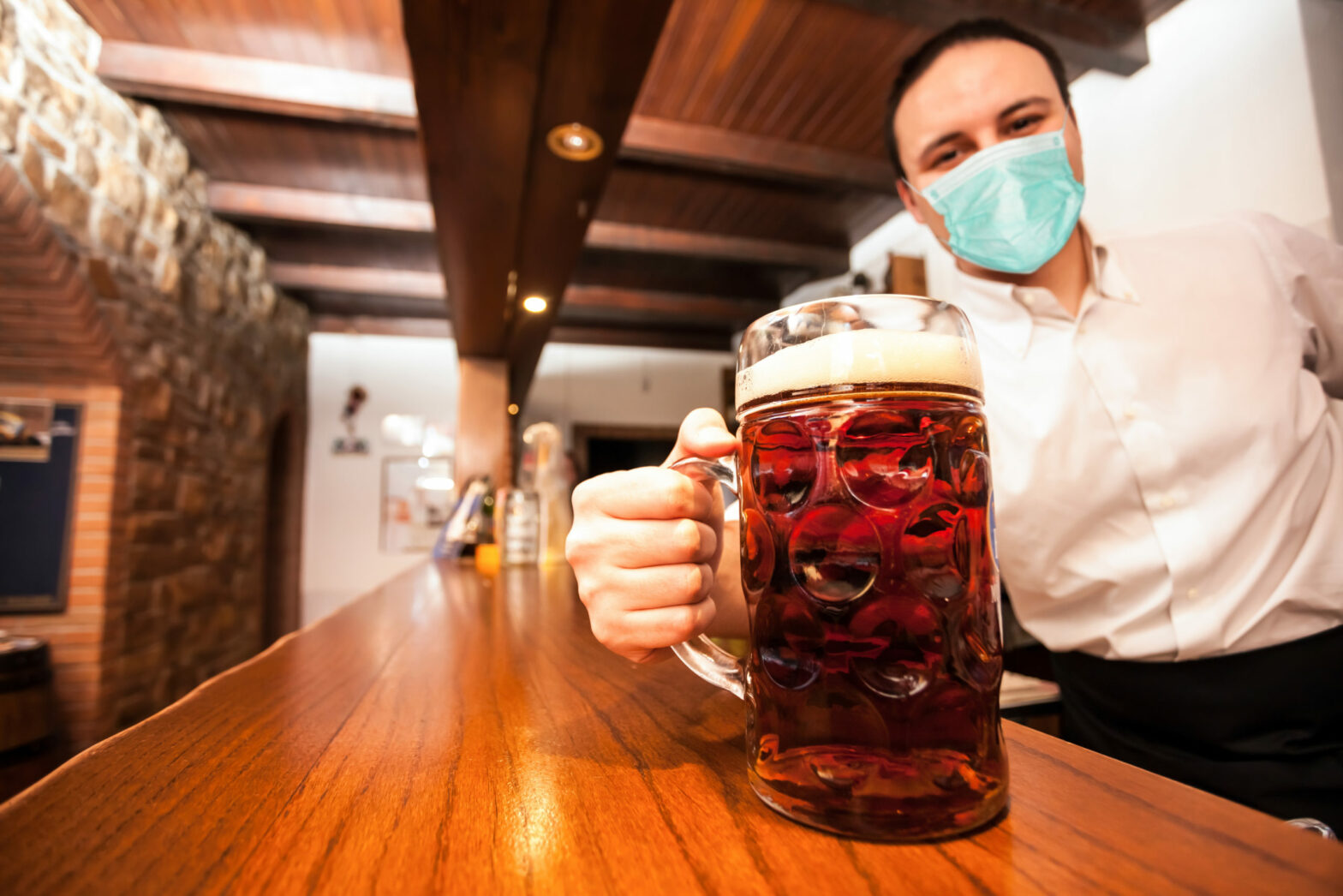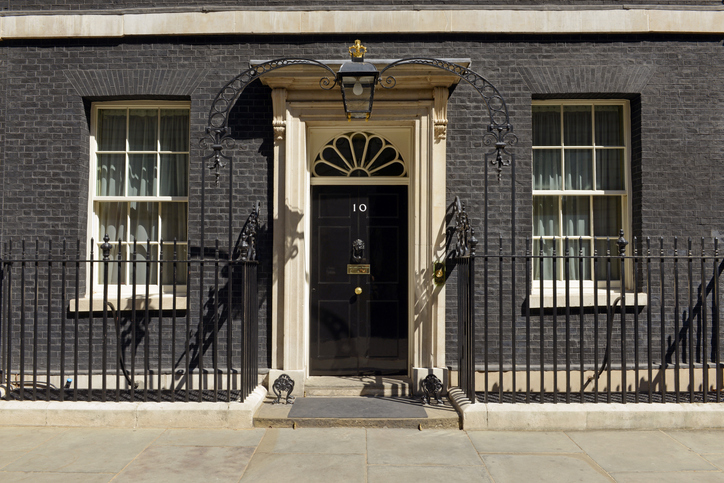UPDATED: More restaurants, pubs and cafés will be able to serve people outside post-lockdown thanks to simpler licensing laws.
The Government announced today (June 25) that it will simplify and reduce the costs of the licensing process for outdoor drinking and stalls.
As part of the new Business and Planning Bill, outdoor markets, pop-up car boot sales and summer fairs won’t need a planning application. Plus, pubs and cafés will be able to use their car parks and terraces as extended outdoor dining/drinking areas using their existing seating licences.
Temporary changes to licensing laws will allow more licensed establishments to sell alcohol for off-the-premises consumption.
Changes for the hospitality industry introduced by the government will:
- Reduce the consultation period for applications for pavement licences from 28 calendar days to five working days, and grant consent after ten working days if the council does not issue a decision
- Set a lower application fee for a pavement and street cafe licence of up to £100
- Remove the need for a planning application for outdoor markets and marquees, meaning they can be set up for longer
- Provide more freedoms for areas to hold car boot sales and summer fairs.
The Government said that councils will need to ensure that they communicate with their communities on licensing laws, that waste is disposed of responsibly and the access to pavements and pedestrianised areas isn’t compromised.
Earlier this week, Boris Johnson announced that the two-metre rule will be relaxed from July 4 and that pubs, restaurants, cafés and attractions can reopen post-lockdown.
For independent bars and eateries, the difference between the two-metre rule being enforced and one-metre plus social distancing is the difference between viability and the 2.8m hospitality staff currently on furlough not having a job to go back to, according to trade body UKHospitality.
The hospitality industry and the Government have also published guidance as to how to reopen your restaurant, pub or hotel post-lockdown.
General guidance states that you must keep at least one metre’s distance (two metres if possible) between individuals from the same household and in the same support bubble.
The most recent measures are geared towards venues ahead of planned opening, as well as reflecting changes with support bubbles, social distancing, test and trace and feedback from the hospitality industry.
Kate Nicholls, chief executive of UKHospitality, said: “Having confirmation of the reopening date is a real boon and affords businesses some time to make the necessary preparations. We are still awaiting the publication of guidance, and we have been working hard to make sure that businesses are fully equipped with our own reopening guidelines, but the initial clarity around the date is very helpful.
“While many venues will endeavour to reopen on July 4, capacities will be constrained by social distancing and some may be unable to trade viably at all, so continued Government support will remain crucial. Many businesses have been closed for months with no revenue and are now facing substantial rent and PAYE bills. We need financial help from the Government, otherwise some of these businesses are going to go under right at the point at which they are allowed to open once again.”
According to the Government’s post-lockdown hospitality sector guidance:
Pubs
- Limits to the number of people allowed into pubs with markings on the floor to ensure social distancing
- Customers encouraged to order drinks on smart phone apps, as opposed to queuing at the bar
- Drinks delivered to spaced-apart tables
- Empty glasses will be collected from tables
- Pub staff will clean bar tops, door handles and fruit machines hourly
- Staff will patrol beer gardens to ensure social distancing is being observed
- Toilets: Consider the use of social distancing marking in areas where queues normally form, and the adoption of a limited entry approach, with one in, one out (whilst avoiding the creation of additional bottlenecks).
- Set clear use and cleaning guidance for toilets, with increased frequency of cleaning in line with usage. Use normal cleaning products, paying attention to frequently hand touched surfaces, and consider use of disposable cloths or paper roll to clean all hard surfaces.
- Consider where congestion caused by people flow and pinch points can be improved. Use one-way systems, staggered shifts and assigned staff mealtimes are possible ways to minimise the risk of transmission.
Restaurants
- Strict limits on number of customers allowed in at any one time to ensure social distancing
- Reservations encouraged to stagger bookings
- Napkins and cutlery will only be brought out with food
- Single-use paper menus will replace laminated menus
- Condiments served in single sachets on request
- Reduced menus likely as chefs try to minimise cross-contamination of ingredients
- Contactless card payment encouraged
- Toilets: Consider the use of social distancing marking in areas where queues normally form, and the adoption of a limited entry approach, with one in, one out (whilst avoiding the creation of additional bottlenecks).
- Setting clear use and cleaning guidance for toilets, with increased frequency of cleaning in line with usage. Use normal cleaning products, paying attention to frequently hand touched surfaces, and consider use of disposable cloths or paper roll to clean all hard surfaces.
- Cleaning procedures for goods and merchandise entering the site.
- Considering where congestion caused by people flow and pinch points can be improved. Using one-way systems, staggered shifts and assigned staff mealtimes are possible ways to minimise the risk of transmission.
Hotels
- Doormen will remind new arrivals that social distancing must be observed
- Receptionists to keep their distance
- Porters will be allowed to carry suitcases up to guests’ rooms but will have to leave them outside
- Guests encouraged to take stairs as opposed to using the lift
- Hotel guests encouraged to use room service rather than hotel restaurant
- Where offering room service, taking measures such as dropping butler’s trays outside door, and encouraging tips to be added to the bill
- Guests must self-isolate in their hotel room if they fall ill and food will be delivered on paper plates
- Encouraging guests to wear masks on communal corridors
- Considering minimising lift usage from reception, and providing clear signage for new lift rules
- Ensuring that any bar or dining area is only opened in a way compliant with UK government guidance on the hospitality sector
- Work with neighbouring businesses and local authorities to consider how to spread the number of people arriving throughout the day, for example by staggering opening hours; this will help reduce demand on public transport at key times and avoid overcrowding
- Take measures to avoid crowded reception areas, such as staggering check-in and check-out times or placing markers on the floor to maintain social distancing
- Make staff accessible to guests via phone, emails and guest apps
Extra guidance on hostels, B&Bs, self-catering accommodation, caravan sites and campsites are available on the government website.
Gyms and spas
Gyms and spas will remain closed from July 4 but the Government has issued some guidelines for businesses to prepare, including:
- Gym staff will use clickers to count people into gyms and swimming pools with booking systems used to prevent overcrowding
- Treadmills and weight machines will be spaced apart and gym managers will enforce social distancing
UKHospitality recommendations post-lockdown
Previously, UKHospitality set out its own draft recommendations for how hospitality businesses should operate post-lockdown.
For example, sauces should be removed from eateries and replaced with individually wrapped condiments. Meanwhile, in pubs, people will be discouraged from standing at the bar.
Hotel buffets will also be off the table, at least in the short term, according to a 75-page document from the industry body.
UKHospitality stressed that you must do a thorough risk assessment before reopening to show that you are taking adequate steps to reduce the spread of COVID-19.
>See also: How to do a coronavirus risk assessment on your small business premises
Specific guidelines for hotels, pubs/bars and restaurants are set out below.
Hotels, accommodation and hostels
- If staff help guests with luggage, keep the required distance apart from guests whilst collecting luggage and either take it to the room before the guest arrives there or knock on the door, step back and leave the luggage at the door. After handling luggage, staff should wash their hands or use a hand sanitiser
- Room service: consider using trays which can be left off the floor next to the door, or think of other ways to protect the order, for example a small light table, or a folding luggage rack both of which have been disinfected first. Staff should knock on the door and leave the tray outside the door and step away. The guest can then pick the tray up, and the staff can remove the tray stand or table
- Lifts: consider minimising lift usage from reception, and advice for safer use of lifts throughout the hotel, can be advised in pre-stay communications and in-building signage and staff communications
- Consider central key card deposit box placed in lobby for disinfection of room keys
- Hotel gyms and spas: numbers permitted into a spa/gym will be within safe guidelines and monitored through the day; booking system for spa/pool usage
- Residents encouraged to change in hotel bedrooms to minimise crowding of changing rooms
- Reception: no handshakes – adopt a USP for greeting guests
Restaurants and casual dining
- Individually wrapped condiments and sauces should be offered on request and put with the plated food, not left on tables
- Cutlery to be brought to the customer with the food and condiments rather than customers helping themselves or left on the table
- Encourage indoor table service where possible but outdoor table service and distanced standing outside will be fine too. Increasing outdoor seating and outdoor points of service such as stalls
- Develop your table plan and arrangement based on the physical distancing guidelines operational at the time.
- Customer contact with commodities (e.g. menus, trays, napkins) should be limited to what is necessary or designed in such a way that cleaning/replacement is carried out after each use. Menus left on tables/table talkers discouraged in favour of other forms of display to the customer. Consider the use of single-use/laminated menus brought to the table
- Use disinfectants and sanitisers that are effective against bacteria as well as cold and flu viruses, as recommended by the current government advice which can be found here: https://www.gov.uk/government/publications/covid-19-decontamination-in-non-healthcare-settings/covid-19-decontamination-in-non-healthcare-settings
- Cleaning regimes for kitchens should reflect the need to reduce risk from coronavirus as well as maintaining all normal expectations relevant to a food business regarding hygiene
- Control movements of staff to maintain mandated social distancing measures where possible i.e. include one person at a time allowed in the chilled stores or dry stores or the changing rooms and toilet
- Hand washing of glassware, plates and cutlery should be avoided where possible with glassware washed separately from plates and cutlery
- Consider the use of social distancing marking in areas where queues normally form, and the adoption of a limited entry approach, with one in, one out (whilst avoiding the creation of additional bottlenecks).
- Setting clear use and cleaning guidance for toilets, with increased frequency of cleaning in line with usage. Use normal cleaning products, paying attention to frequently hand touched surfaces, and consider use of disposable cloths or paper roll to clean all hard surfaces.
- Cleaning procedures for goods and merchandise entering the site.
- Considering where congestion caused by people flow and pinch points can be improved. Using one-way systems, staggered shifts and assigned staff mealtimes are possible ways to minimise the risk of transmission.
>See also: Top 5 Facebook groups for small businesses during coronavirus
Pubs and bars
- Assess the flow of staff and customers in the pub as part of the risk assessment. For bar orders, inform customers to keep the minimum safe distance from bar staff as well as from other customers waiting in a queue to be served e.g. directed by tape marks on the floor, signage
- Measures to consider include managing the bar to create directional movement of customers ordering drinks at a till point, then moving to a second point to collect their drinks
- Consider restrictions on customers remaining at the bar after ordering and getting their drink
- Advise that empty glasses are collected from tables by staff, and customers discouraged from returning empty glasses to the bar
- Beer gardens/outside areas: although easier to manage if a large outdoor area, there is a danger of groups forming. Consider as part of your risk assessment. Regular patrol of outside areas, smoking/vaping areas, restrictions that may be required for children’s play areas
- Toilets: as part of your risk assessment, have a plan specifically for customer toilets to ensure compliance with physical distancing rules and ensure all staff are aware
Read more
How to reopen your small business post lockdown – what we know so far





